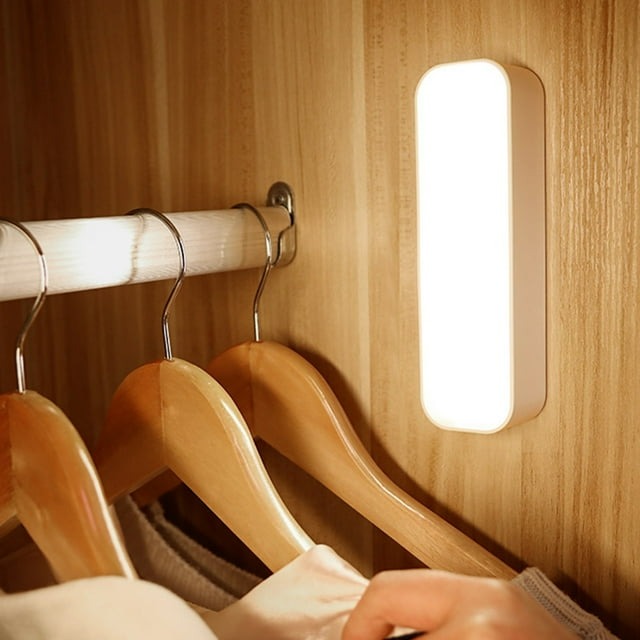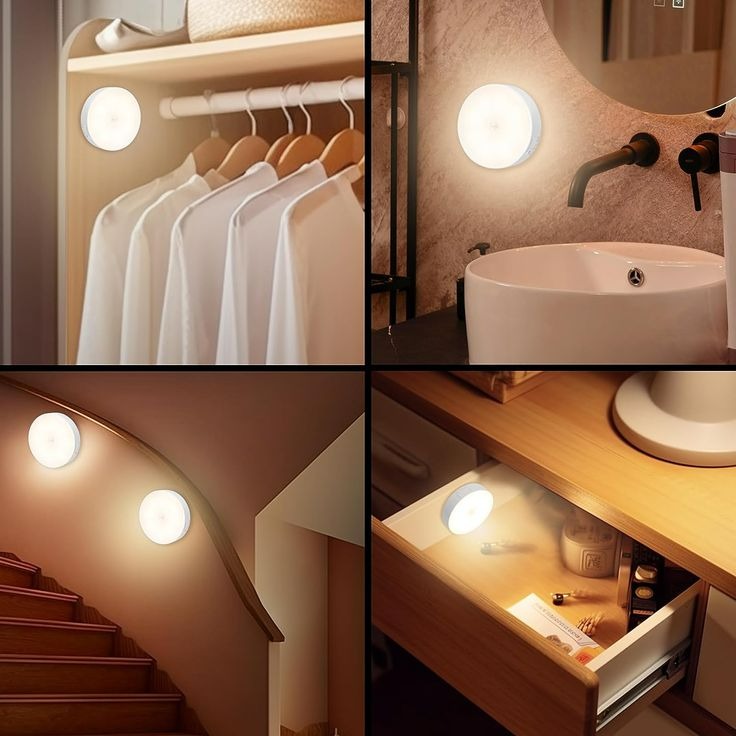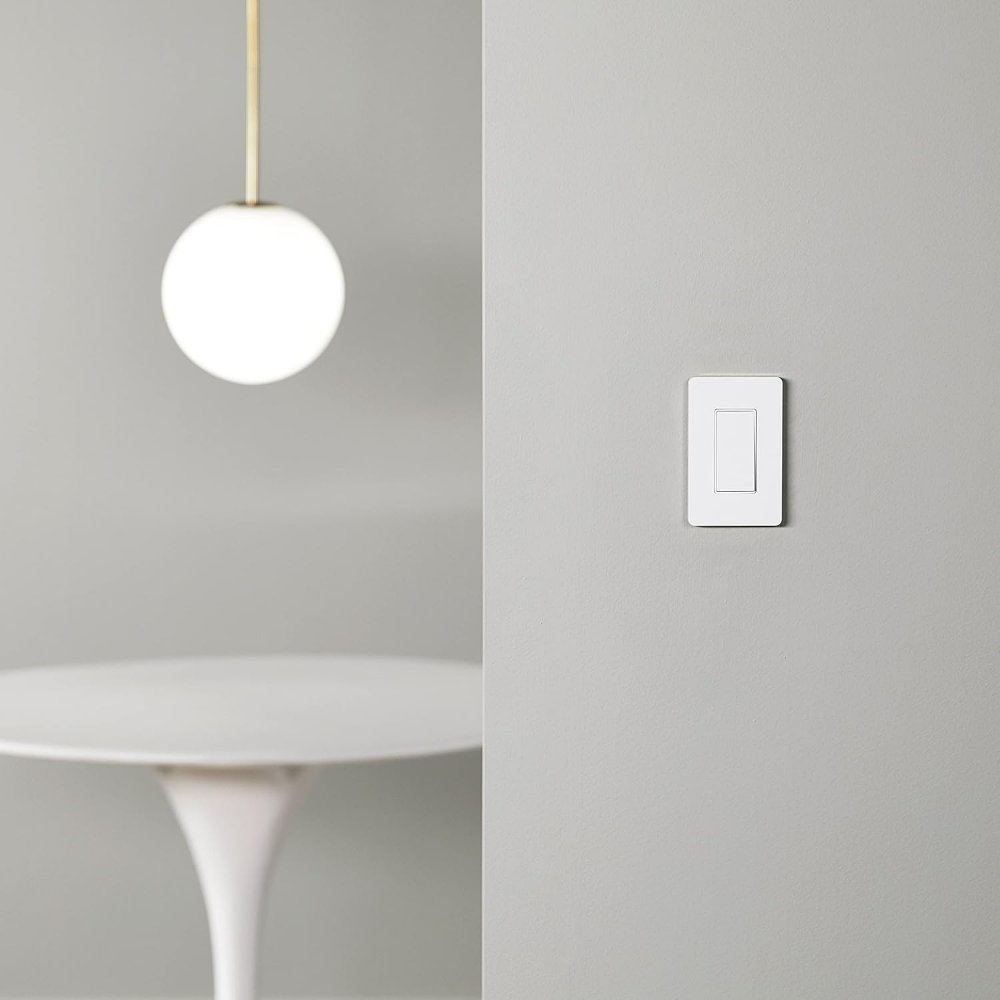Introduction to Smart Motion Sensor Light Switches
A smart motion sensor light switch is an innovation for modern living. It’s a device that turns on or off lights as it detects motion in a room. Instead of searching for a switch in the dark, the lights come on automatically. This is not just convenient; it also boosts home security and energy efficiency. Imagine entering a room with your hands full and the lights turn on by themselves. Or picture a hallway that lights up as you walk through it. This is the practical magic of smart motion sensor light switches.
These switches use various technologies to detect presence. Once they sense movement, they activate the lights. The lights can also turn off automatically when no motion is detected for some time. Homeowners appreciate that they no longer need to remind the kids to turn off the lights.
When choosing a smart motion sensor light switch, consider the size of the area and the type of activities. Also, think about the other smart devices in your home. Many smart switches can work with them. In this guide, we will explore all these aspects and more. We’ll help you understand the benefits, how they work, and the latest advancements. We will also discuss the installation process, cost, energy savings, and future trends.
In short, these switches make life easier and safer. They are a smart investment for any home. Let’s dive into the world of smart motion sensor light switches and see how they can improve your home.

The Benefits of Installing Smart Motion Sensor Light Switches
Installing smart motion sensor light switches in your home offers several benefits. They enhance convenience, security, and energy savings—three factors homeowners often prioritize. Below, we explore these benefits in more detail.
Convenience for Homeowners: The primary advantage of these switches is convenience. Walk into a room, and the lights turn on without you needing to flip a switch. This is especially helpful when your hands are full or in rooms where light switches are not easily reached.
Improved Home Security: A well-lit home can deter potential intruders. Smart motion sensor light switches can turn lights on and off in a natural pattern, making a house appear occupied even when you are away. This spontaneous lighting adds to your home’s security system.
Energy Savings and Eco-Friendliness: By ensuring lights are on only when needed, these switches cut down on wasted energy. They shut off when no motion is detected, thus reducing your electricity bill. Also, using less energy means a smaller carbon footprint.
Longer Bulb Life: With more efficient on-off cycles, your light bulbs will last longer. This is because the bulbs are not left on unnecessarily, which can shorten their lifespan.
The smart motion sensor light switch is a simple upgrade with powerful benefits. In the following sections, we’ll cover how they work, the technology behind them, and how to choose them for your home.
How Smart Motion Sensor Light Switches Work
Smart motion sensor light switches are striking examples of convenient technology. They use motion detection to control lighting. This section will explain how these innovative switches sense movement and act accordingly.
Infrared Sensors: Most smart motion sensor light switches contain passive infrared sensors (PIR). These detect heat energy from moving people or animals. When the sensor perceives an increase in infrared energy, it activates the switch. The lights turn on as a result.
Ultrasonic Sensors: Some models use ultrasonic technology. They emit high-frequency sound waves. These waves bounce off objects and return to the sensor. Movement changes the pattern of the returning waves. The switch reacts by turning on the lights.
Microwave Sensors: A less common type, microwave sensors, work similarly to ultrasonic sensors. They send out microwave pulses and measure their reflection off moving objects. This information determines whether the light should turn on or off.
Dual-Technology Sensors: There are also dual-technology sensors. They combine infrared and ultrasonic technologies. This approach reduces false activations. It ensures lights switch on only when there’s actual movement.
Timer Settings: Smart switches with motion sensors also have timers. These allow lights to remain on for a preset period after detecting movement. If no further movement occurs, the timer expires, and the lights shut off. This feature saves energy.
Adjustable Sensitivity: Homeowners can adjust the sensitivity of the sensors. This is crucial in avoiding unnecessary triggers, like a small pet moving through the room.
Smart motion sensor light switches incorporate complex technology. Yet, their operation is seamless and straightforward for users. They revolutionize the way we interact with lights at home. Simplifying life and conserving energy, they are a smart choice for modern living.

The Latest Technology Advances in Motion Sensing
The field of motion sensing technology is constantly evolving, with fresh advancements emerging frequently. These innovations aim to make smart motion sensor light switches even more efficient, reliable, and easy to use.
Enhanced Detection Algorithms: Modern sensors are now equipped with smarter algorithms. These algorithms improve accuracy in detecting human presence. This reduces the chances of false triggers and saves even more energy.
Integration Capabilities: Current sensors are designed to integrate seamlessly with other home automation devices. This allows for coordinated actions, like turning on lights and playing music when you enter a room.
Improved Wireless Connectivity: The latest smart switches feature advanced wireless technologies. These include protocols like Zigbee and Z-Wave, which offer reliable connections and don’t overcrowd the Wi-Fi network.
Greater Sensitivity Control: Users can now fine-tune the sensitivity of their sensors with greater precision. This customization ensures that lights react appropriately to the specific needs of each space.
Sleek Design Aesthetics: Motion sensor light switches are being designed with aesthetics in mind. More styles and finishes are available to match diverse interior décors.
Energy Harvesting Technology: Some cutting-edge switches are even able to harvest energy from the environment. This can help power the switch and contribute to a home’s overall energy efficiency.
These technological strides are making smart motion sensor light switches more appealing and practical for homeowners. It’s clear that as technology progresses, the potential for these devices will continue to expand.
Choosing the Right Smart Motion Sensor Light Switch for Your Home
Picking the perfect smart motion sensor light switch involves several factors. Here is how to choose one that suits your needs.
Check Compatibility: Ensure the switch works with your current lighting and smart home devices.
Consider the Room’s Size: Match the sensor range with your room size for best results.
Evaluate Features: Look for adjustable sensitivity, timers, and energy-saving modes.
Think About Installation: Decide if you can DIY or need professional help.
Assess Design: Choose a switch that blends with your home decor.
Plan for the Future: Opt for a switch that can adapt to evolving technologies.
Following these points helps you find a switch that’s convenient, secure, and energy-efficient. Selecting the right one adds comfort and value to your home.

Installation and Setup Tips for Smart Motion Sensor Light Switches
Installing a smart motion sensor light switch is a straightforward process. Here are some tips to help you with the installation and setup.
Select the Right Tools: Have a screwdriver, wire stripper, and voltage tester ready. Ensure power is off before starting.
Read the Manual: Each switch comes with a manual. Follow it closely for best results.
Wire Correctly: Connect wires according to the manual. Mistakes can cause malfunctions or hazards.
Test Before Finalizing: Turn the power back on and test the switch. Make sure it works properly before finalizing the installation.
Setup with Smart Home: If compatible, connect your switch to your smart home system. Use the app to configure settings.
Adjust Settings: Set timers and sensitivity levels as needed. This ensures the switch operates optimally for your space.
Seek Expert Help: If unsure, hire a professional. They ensure safe and proper installation.
Check for Updates: After setup, check for firmware updates. This keeps your switch secure and functioning well.
Following these installation and setup tips will make integrating a smart motion sensor light switch into your home a success. Your lights will now respond to movement, enhancing comfort and efficiency.
Smart Integration: Connecting Your Light Switches to Home Automation Systems
Integrating smart motion sensor light switches into home automation systems takes convenience to a new level. Here’s how to connect your light switches with home automation for a smarter home.
Choosing a Compatible Home Automation System
First, find a home automation system that works with your smart switches. Look for systems that support Zigbee or Z-Wave protocols.
Seamless Operation Through Smart Assistants
Use voice commands with smart assistants like Amazon Alexa or Google Home. Enable control of lights without lifting a finger.
Connecting with Other Smart Devices
Link your light switches to other devices. Connect with security cameras or thermostats for coordinated functions.
Set Up Triggers and Routines
Create routines where lights turn on with movement or at certain times. Enhance daily living with automated light patterns.
Upgrading for Future Integration
Choose switches that update wirelessly. Keep your system ready for new features and better integration.
The Role of Mobile Apps
Use apps to manage your smart switches remotely. Adjust settings and monitor activity from your mobile device.
By integrating smart motion sensor light switches into home automation, you boost comfort, security, and energy efficiency. Make your home a sanctuary of smart living.
Cost and Energy Savings Analysis of Smart Motion Sensor Light Switches
Implementing smart motion sensor light switches in your home can lead to significant cost and energy savings. These savings manifest both in immediate effects and long-lasting benefits.
Immediate Reduction in Energy Bills: The most obvious financial benefit comes from reduced energy usage. Lights only turn on when needed, which lowers your electricity bill.
Increased Bulb Lifespan: With more precise control over lighting, bulbs last longer, saving money on replacements.
Government Rebates and Incentives: Some areas offer incentives for installing energy-efficient devices, which can offset initial costs.
Smart Home Value Increase: Homes with smart technology may have higher resale values. Buyers appreciate energy-saving features.
Long-Term Savings: Over time, energy costs can only rise. Investing in smart technology now locks in savings for the future.
By incorporating smart motion sensor light switches, you’re not only saving money. You’re also taking an active role in energy conservation for a greener planet. As technology evolves, further cost reductions and energy efficiencies are expected, reinforcing the value of this smart investment.
Future Trends: What to Expect from Smart Motion Sensor Light Switches Beyond 2025
As we look beyond 2025, smart motion sensor light switch technology is set for exciting advancements. Here’s what to anticipate in the future:
AI and Machine Learning Integration: Smart switches will learn and adapt. They’ll predict your habits for more responsive lighting.
Refined Motion Detection: Sensors will become more precise. They’ll tell the difference between pets and people to avoid false alerts.
Integration with Wearable Tech: Imagine lights that respond to your smartwatch. This is likely as integration between devices improves.
Autonomous Homes: Homes will adjust lights based on time, weather, and occupancy. Efficiency and comfort will improve.
Alternative Power Sources: We might see switches powered by solar or kinetic energy. This will cut down on electrical wiring and save more energy.
Improved Security Features: Expect built-in cameras and security alerts. These features will enhance home safety.
Gesture Recognition: Wave your hand or make a gesture to control the lights. Switches will likely support these interactions soon.
Better Network Security: As switches connect to the internet, security will be a top priority. Future models will likely have advanced encryption.
Smart motion sensor light switches will keep evolving. They will make homes smarter, safer, and more energy-efficient. We have much to look forward to in the world of smart home automation.
Conclusion: Enhancing Home Efficiency and Security with Smart Motion Sensor Light Switches
To wrap up, smart motion sensor light switches are a big leap towards home efficiency and safety. They give us comfort, reduce energy costs, and make our homes smart. Here is why every homeowner should think about adding them.
They Are Effortless: Walk into any room, and lights greet you without a switch. This ease is what makes smart switches a must-have.
They Cut Costs: Your power bill goes down as lights turn off when not needed. It’s simple; no wasted energy means more money saved.
They Up Security: Unwanted guests think twice when lights activate at their movement. Your home stays safer with smart switches on guard.
They Are Future-Ready: These switches get smarter with time, talking to other devices and learning your habits. Your home gets an upgrade, always staying new.
Investing in smart motion sensor light switches is wise. Your home gets smarter, you save money and live in a more secure place. It’s clear that this technology is just starting its journey. The future is bright for smart homes, with these switches at the core of it all.